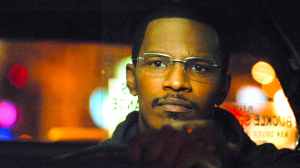A few months ago, a number of comics industry professionals started to circulate a list of Pixar’s “22 rules of storytelling” on Twitter. It’s making the rounds again, albeit somewhat less aggressively, in the last little while, hot on the heels of Joss Whedon’s 10 writing tips, constructed in 2009 but again…something that seems to come back around every so often when someone discovers it for the first time and then injects it into the unpredictable flow of Internet conversation.What do each have to say? Well, let’s check ’em out, then have a little fun comparing.(And remember, folks, Whedon did some work on Toy Story, so there’s an entirely good chance that some of his stuff comes straight from the Pixar playbook and people he met and spoke to there who helped shape his philosophy–or vice-versa.)Joss Whedon’s Top 10 Writing Tips
Videos by ComicBook.com
Joss Whedon is most famous for creating Buffy the Vampire Slayer, its spin-off Angel and the short-lived but much-loved Firefly series. But the writer and director has also worked unseen as a script doctor on movies ranging from Speed to Toy Story. Here, he shares his tips on the art of screenwriting.1. FINISH ITActually finishing it is what I’m gonna put in as step one. You may laugh at this, but it’s true. I have so many friends who have written two-thirds of a screenplay, and then re-written it for about three years. Finishing a screenplay is first of all truly difficult, and secondly really liberating. Even if it’s not perfect, even if you know you’re gonna have to go back into it, type to the end. You have to have a little closure.2. STRUCTUREStructure means knowing where you’re going ; making sure you don’t meander about. Some great films have been made by meandering people, like Terrence Malick and Robert Altman, but it’s not as well done today and I don’t recommend it. I’m a structure nut. I actually make charts. Where are the jokes ? The thrills ? The romance ? Who knows what, and when ? You need these things to happen at the right times, and that’s what you build your structure around : the way you want your audience to feel. Charts, graphs, coloured pens, anything that means you don’t go in blind is useful.3. HAVE SOMETHING TO SAYThis really should be number one. Even if you’re writing a Die Hard rip-off, have something to say about Die Hard rip-offs. The number of movies that are not about what they purport to be about is staggering. It’s rare, especially in genres, to find a movie with an idea and not just, ‘This’ll lead to many fine set-pieces’. The Island evolves into a car-chase movie, and the moments of joy are when they have clone moments and you say, ‘What does it feel like to be those guys ?’4. EVERYBODY HAS A REASON TO LIVEEverybody has a perspective. Everybody in your scene, including the thug flanking your bad guy, has a reason. They have their own voice, their own identity, their own history. If anyone speaks in such a way that they’re just setting up the next person’s lines, then you don’t get dialogue : you get soundbites. Not everybody has to be funny ; not everybody has to be cute ; not everybody has to be delightful, and not everybody has to speak, but if you don’t know who everybody is and why they’re there, why they’re feeling what they’re feeling and why they’re doing what they’re doing, then you’re in trouble.5. CUT WHAT YOU LOVEHere’s one trick that I learned early on. If something isn’t working, if you have a story that you’ve built and it’s blocked and you can’t figure it out, take your favorite scene, or your very best idea or set-piece, and cut it. It’s brutal, but sometimes inevitable. That thing may find its way back in, but cutting it is usually an enormously freeing exercise.6. LISTENWhen I’ve been hired as a script doctor, it’s usually because someone else can’t get it through to the next level. It’s true that writers are replaced when executives don’t know what else to do, and that’s terrible, but the fact of the matter is that for most of the screenplays I’ve worked on, I’ve been needed, whether or not I’ve been allowed to do anything good. Often someone’s just got locked, they’ve ossified, they’re so stuck in their heads that they can’t see the people around them. It’s very important to know when to stick to your guns, but it’s also very important to listen to absolutely everybody. The stupidest person in the room might have the best idea.7. TRACK THE AUDIENCE MOODYou have one goal : to connect with your audience. Therefore, you must track what your audience is feeling at all times. One of the biggest problems I face when watching other people’s movies is I’ll say, ‘This part confuses me’, or whatever, and they’ll say, ‘What I’m intending to say is this’, and they’ll go on about their intentions. None of this has anything to do with my experience as an audience member. Think in terms of what audiences think. They go to the theater and they either notice that their butts are numb, or they don’t. If you’re doing your job right, they don’t. People think of studio test screenings as terrible, and that’s because a lot of studios are pretty stupid about it. They panic and re-shoot, or they go, ‘Gee, Brazil can’t have an unhappy ending,’ and that’s the horror story. But it can make a lot of sense.8. WRITE LIKE A MOVIEWrite the movie as much as you can. If something is lush and extensive, you can describe it glowingly ; if something isn’t that important, just get past it tersely. Let the read feel like the movie ; it does a lot of the work for you, for the director, and for the executives who go, ‘What will this be like when we put it on its feet ?’9. DON’T LISTENHaving given the advice about listening, I have to give the opposite advice, because ultimately the best work comes when somebody’s f—ed the system ; done the unexpected and let their own personal voice into the machine that is movie-making. Choose your battles. You wouldn’t get Paul Thomas Anderson, or Wes Anderson, or any of these guys if all movie-making was completely cookie-cutter. But the process drives you in that direction ; it’s a homogenizing process, and you have to fight that a bit. There was a point while we were making Firefly when I asked the network not to pick it up : they’d started talking about a different show.10. DON’T SELL OUTThe first penny I ever earned, I saved. Then I made sure that I never had to take a job just because I needed to. I still needed jobs of course, but I was able to take ones that I loved. When I say that includes Waterworld, people scratch their heads, but it’s a wonderful idea for a movie. Anything can be good. Even Last Action Hero could’ve been good. There’s an idea somewhere in almost any movie : if you can find something that you love, then you can do it. If you can’t, it doesn’t matter how skillful you are : that’s called whoring.
Of course, Whedon is an extremely successful screenwriter and filmmaker, but his experiences are his own, and he’s had both successes and failures using that philosophy. Pixar, on the other hand, have had one or two missteps buried in an ocean of the most successful animated films of the last 30 years. What have their people got to say about it? Well, from the Twitter account of storyboard artist Emma Coats…
#1: You admire a character for trying more than for their successes.#2: You gotta keep in mind what’s interesting to you as an audience, not what’s fun to do as a writer. They can be v. different.#3: Trying for theme is important, but you won’t see what the story is actually about til you’re at the end of it. Now rewrite.#4: Once upon a time there was ___. Every day, ___. One day ___. Because of that, ___. Because of that, ___. Until finally ___.#5: Simplify. Focus. Combine characters. Hop over detours. You’ll feel like you’re losing valuable stuff but it sets you free.#6: What is your character good at, comfortable with? Throw the polar opposite at them. Challenge them. How do they deal?#7: Come up with your ending before you figure out your middle. Seriously. Endings are hard, get yours working up front.#8: Finish your story, let go even if it’s not perfect. In an ideal world you have both, but move on. Do better next time.#9: When you’re stuck, make a list of what WOULDN’T happen next. Lots of times the material to get you unstuck will show up.#10: Pull apart the stories you like. What you like in them is a part of you; you’ve got to recognize it before you can use it.#11: Putting it on paper lets you start fixing it. If it stays in your head, a perfect idea, you’ll never share it with anyone.#12: Discount the 1st thing that comes to mind. And the 2nd, 3rd, 4th, 5th – get the obvious out of the way. Surprise yourself.#13: Give your characters opinions. Passive/malleable might seem likable to you as you write, but it’s poison to the audience.#14: Why must you tell THIS story? What’s the belief burning within you that your story feeds off of? That’s the heart of it.#15: If you were your character, in this situation, how would you feel? Honesty lends credibility to unbelievable situations.#16: What are the stakes? Give us reason to root for the character. What happens if they don’t succeed? Stack the odds against.#17: No work is ever wasted. If it’s not working, let go and move on – it’ll come back around to be useful later.#18: You have to know yourself: the difference between doing your best & fussing. Story is testing, not refining.#19: Coincidences to get characters into trouble are great; coincidences to get them out of it are cheating.#20: Exercise: take the building blocks of a movie you dislike. How d’you rearrange them into what you DO like?#21: You gotta identify with your situation/characters, can’t just write ‘cool’. What would make YOU act that way?#22: What’s the essence of your story? Most economical telling of it? If you know that, you can build out from there.
There are some obvious similarities here; “the most economical telling of” your story gels nicely with Whedon’s advice to cut your favorite bits if they’re not working or necessary, for example; so does the #5 rule on Pixar’s list, about how sometimes you think you’re losing something valuable, but it’s “freeing.” That’s particularly interesting in that Whedon uses almost the same phraseology, saying that making those cuts is “an enormously freeing exercise.”Pixar’s #2 about being in the head space of an audience member is pretty much the same thing Whedon is getting at with his #7 rule. It’s also interesting because it runs counter to so much of what you hear from the famous auteurs of the day; a lot of guys will tell you that you can’t talk down to the audience, and have to assume that they’re with you on what you’re doing, otherwise you’re going to make a crap movie. There’s certainly a kernel of truth there, in that you don’t want to be constantly spoon-feeding your audience information that should be obvious…butWhedon’s #2, on the other hand, gives the slower audience members all they need to know to understand Pixar’s #4. Pixar basically posits that if your story is too complex to be put into an easy-to-understand structure, then you’re probably doing it wrong. That might not be true all the time (see also: David Lynch), but it certainly tends to be true for major tentpole films that hope to make hundreds of millions of dollars.And of course, Pixar’s point about having an ending early in your story’s development is well-taken for Whedon’s top bullet point. It helps you to know when to shut up. For example — fin.







